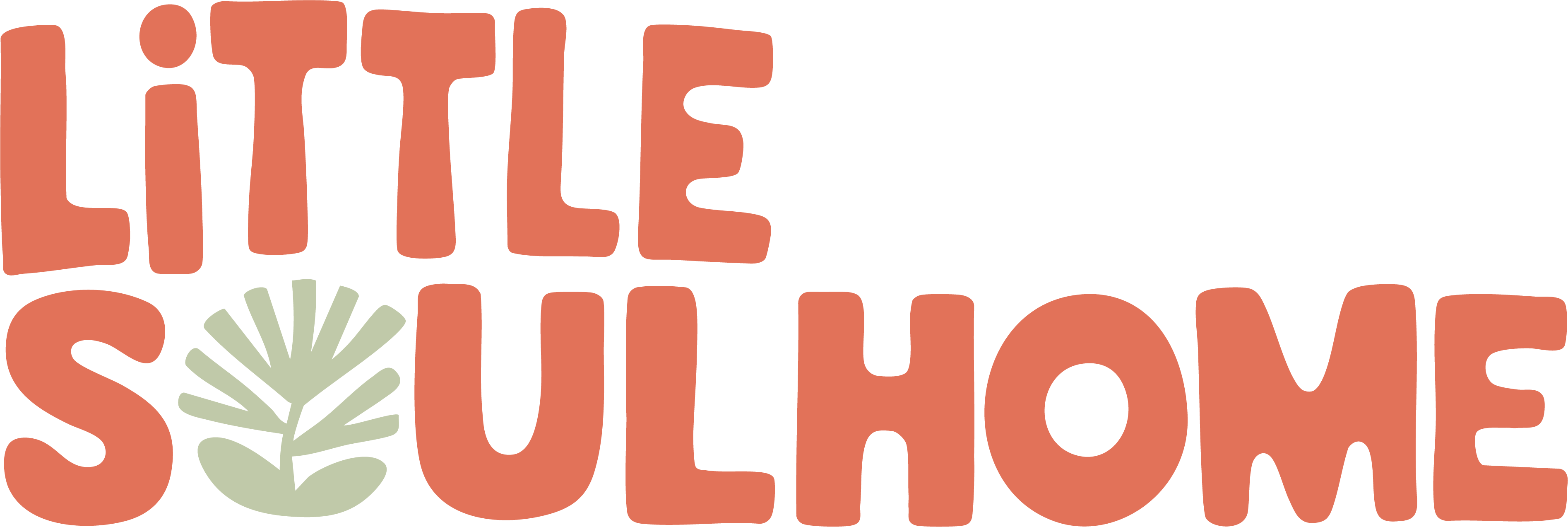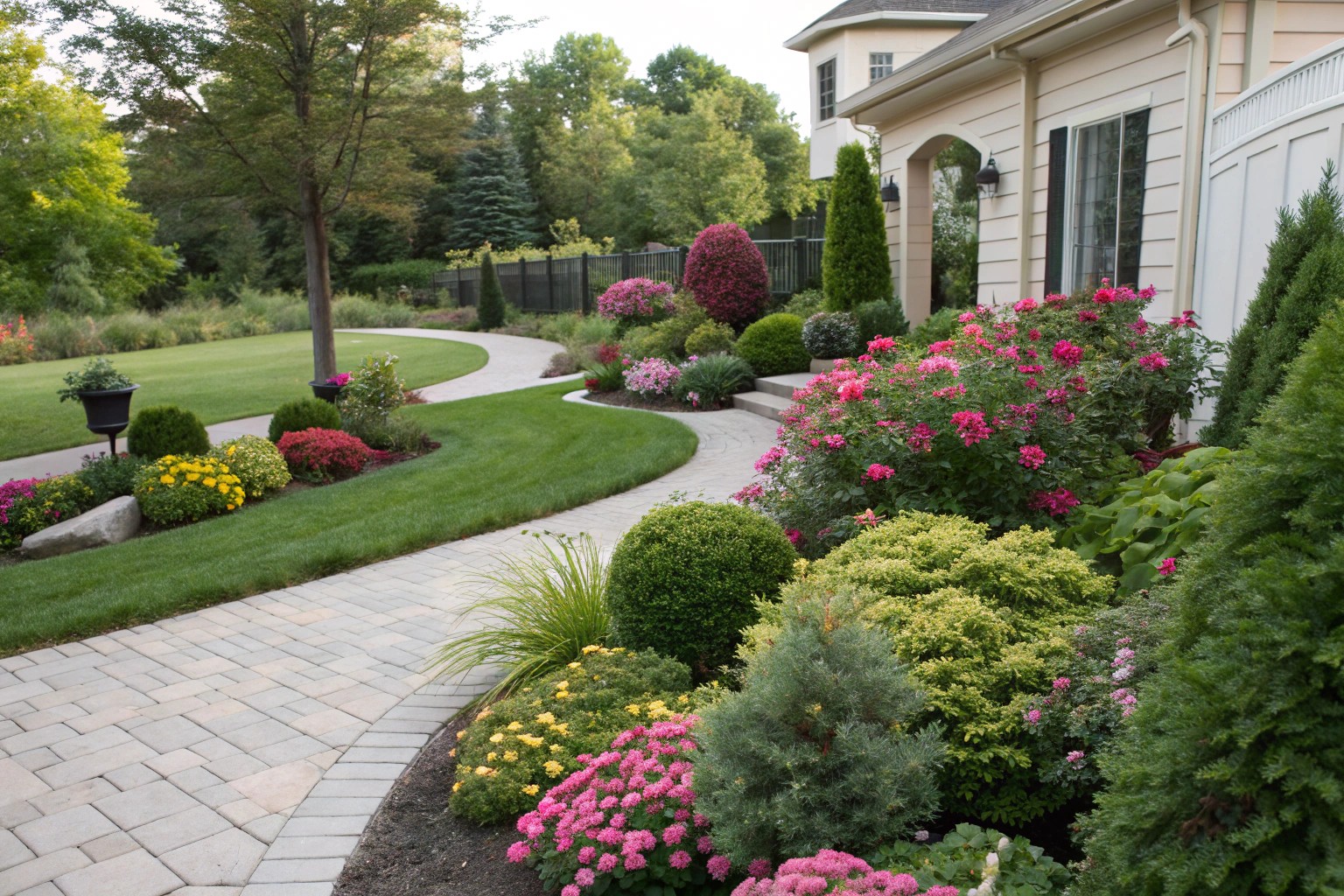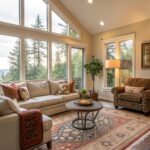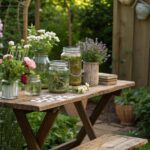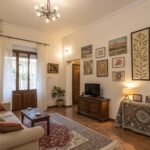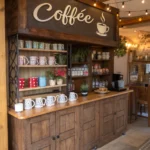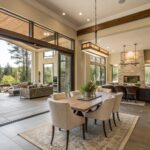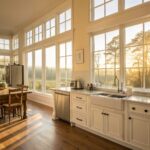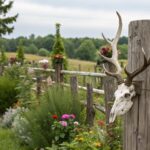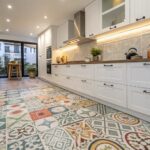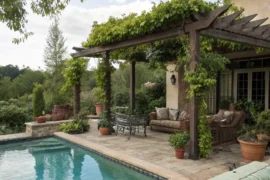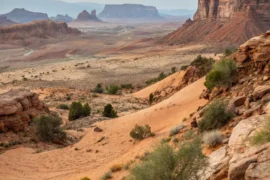Front yards serve as the critical transition between public and private realms, offering both a welcoming face to visitors and a comfortable outdoor space for residents. After designing hundreds of front yards across diverse neighborhoods, I’ve found that the most successful spaces balance aesthetic appeal with functional design while reflecting the character of the home and its inhabitants. This guide will walk you through creating a front yard that feels like an extension of your living space while enhancing your home’s curb appeal.
Understanding the Dual Nature of Front Yards
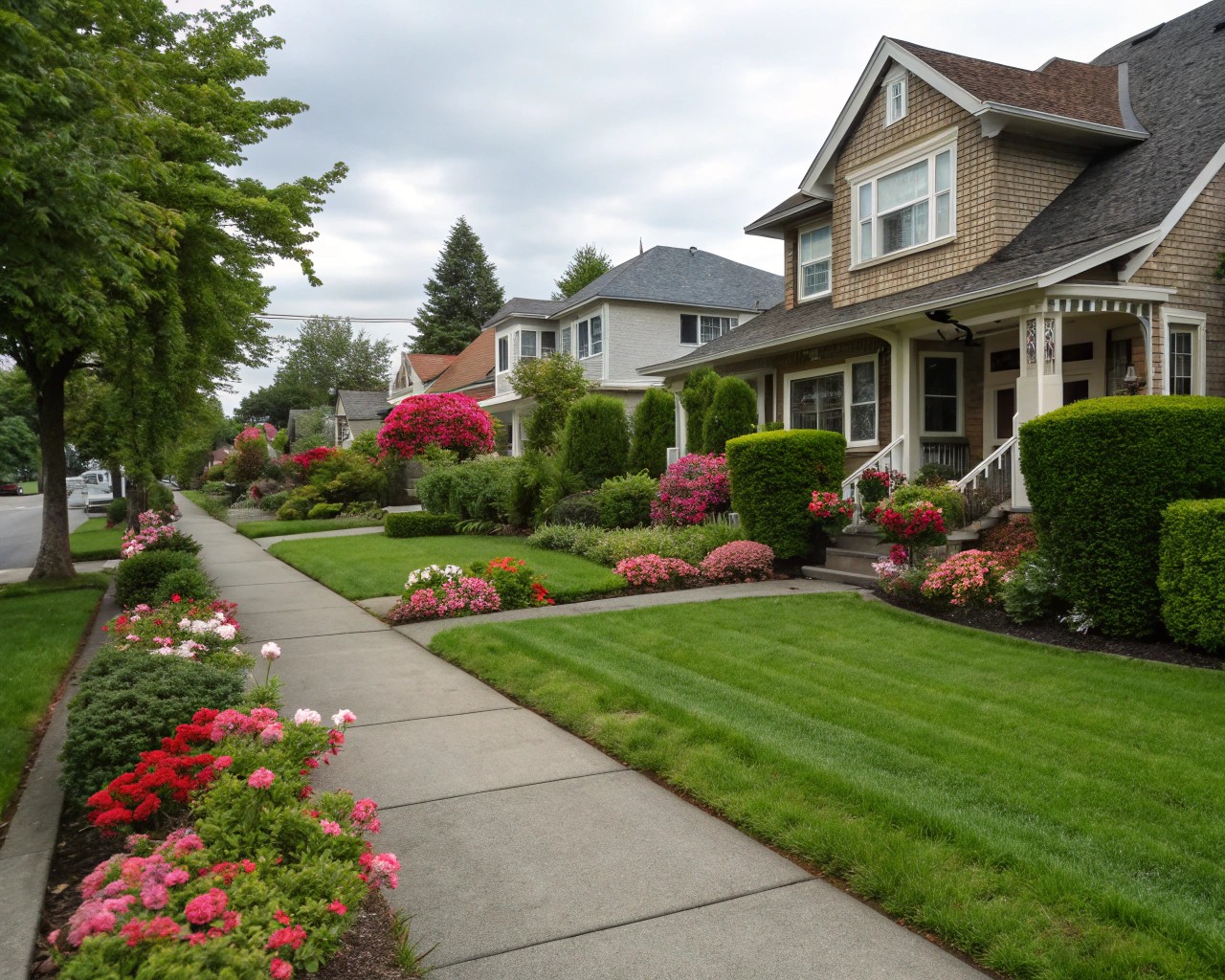
Front yards exist in a unique spatial category—technically private property yet visually public. This semi-private-public character creates both challenges and opportunities. Research shows that well-designed front yards contribute significantly to social sustainability and community building by providing spaces for casual encounters and interactions.
When I’m approached about a front yard redesign, my first question is always about how clients want to use the space. Do they want a purely aesthetic foreground for their home, or do they envision actually living in and using this outdoor area? The answer fundamentally shapes the design direction.
The Evolution of Front Yard Design
Historically, front yards often functioned merely as decorative settings for houses. However, contemporary perspectives recognize their potential for much more. As landscaping standards evolve, front yards are increasingly designed to meet homeowners’ practical needs, providing areas for work, play, dining, growing food, or simply enjoying time with friends and neighbors.
This evolution reflects our changing relationship with outdoor spaces, particularly after recent years pushed us to maximize the functionality of our homes and yards.
Fundamental Design Principles for Front Yards
Before diving into specific elements, let’s establish core design principles that create harmonious front yard spaces:
Balance and Proportion
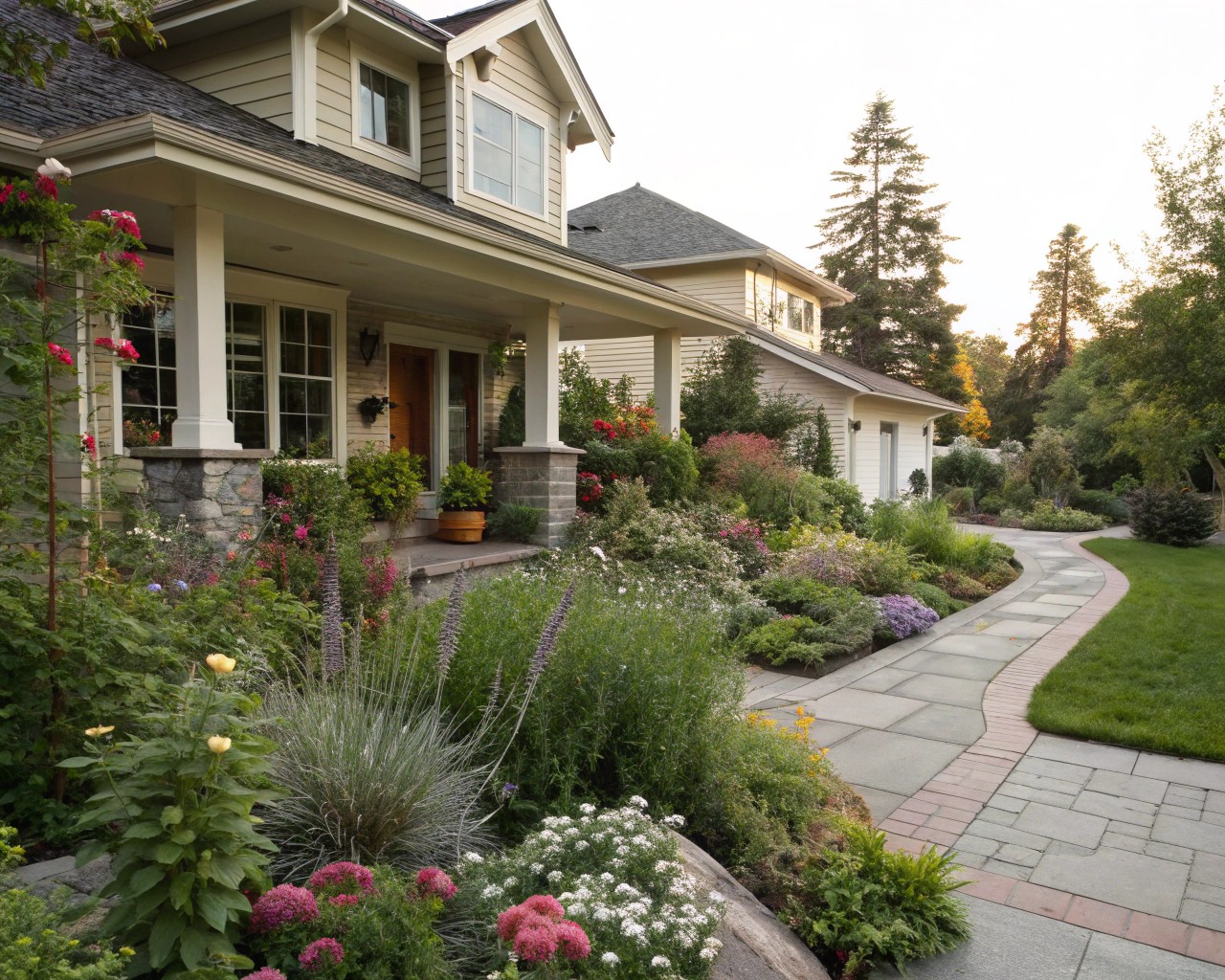
The size of plants and features should remain proportional to your house and yard. A common mistake I see is oversized elements that overwhelm smaller homes or undersized features that get lost on larger properties.
Maintaining appropriate scale between plants, the house, and the yard is key. Guidance from resources like the Florida-Friendly Landscapes program emphasizes this proportionality, also suggesting that yards become more “interesting by having variation in plant sizes (especially heights), color, texture, and shape.”
Creating Logical Flow

Your front yard should guide people naturally from the street to your entrance with clear, intuitive pathways. This doesn’t necessarily mean a straight line—curved, organic pathways often create more visual interest and a sense of discovery.
Table 1: Key Design Elements and Their Visual Impact
| Design Element | Visual Impact | Practical Considerations |
|---|---|---|
| Curved pathways | Creates rhythm and flow | Requires more space than straight paths |
| Specimen trees | Provides focal point and structure | Consider mature size and maintenance |
| Mixed planting beds | Adds texture, color and seasonal interest | Requires plant knowledge for successful combinations |
| Built-in seating | Encourages lingering and social interaction | Should be placed thoughtfully for comfort and visibility |
| Lighting | Enhances safety and extends usability | Balance between security and ambiance |
Front Yard Zoning: Creating Spatial Definition
One approach I’ve found particularly effective is dividing the front yard into distinct zones. During my early design career, I struggled with cohesion until I began thinking of front yards as a series of “outdoor rooms” rather than a single space.
The Three-Zone Approach
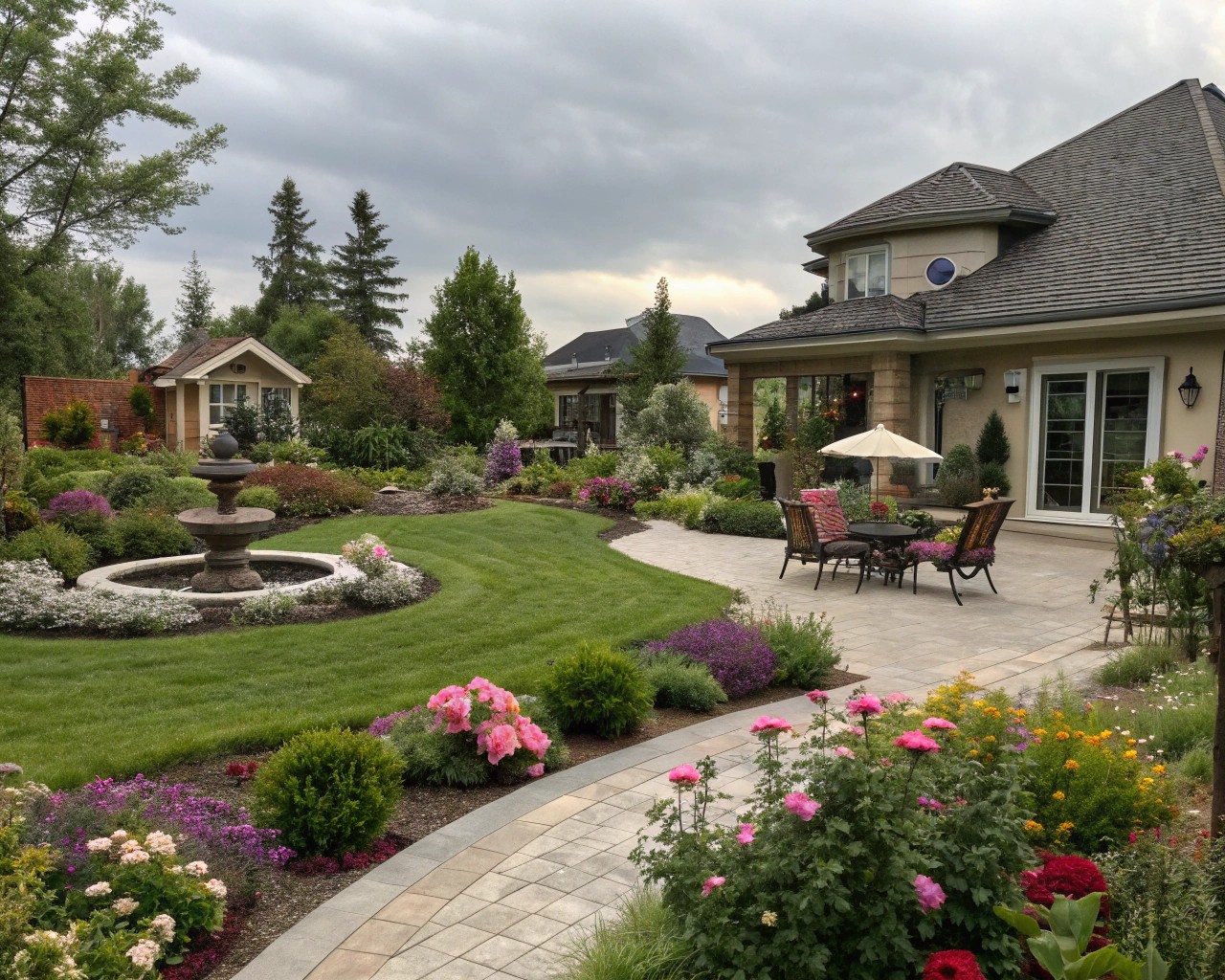
- Public Zone: The area closest to the street (including verges/hellstrips)
- Transition Zone: The middle area between street and house
- Private Zone: The area immediately adjacent to the house
Using pathways, hardscapes, and plants to divide and organize spaces can effectively create distinct outdoor ‘rooms’. As suggested by the Florida-Friendly Landscaping guide, this strategy helps accommodate different functions within a cohesive overall design.
For a townhouse project I completed last year, dividing a long, narrow yard into distinct spaces was particularly effective. Such yards can sometimes pose a challenge, but as noted in a similar case study, this configuration provided an opportunity to creatively divide the space. By creating a series of areas to either pass through or pause within, we transformed what might have felt like a monotonous corridor into an inviting sequence of experiences.
Creating Social Front Yards
If community connection is important to you, consider how your front yard can facilitate social interaction while still maintaining appropriate privacy.
Encouraging Interaction While Preserving Privacy
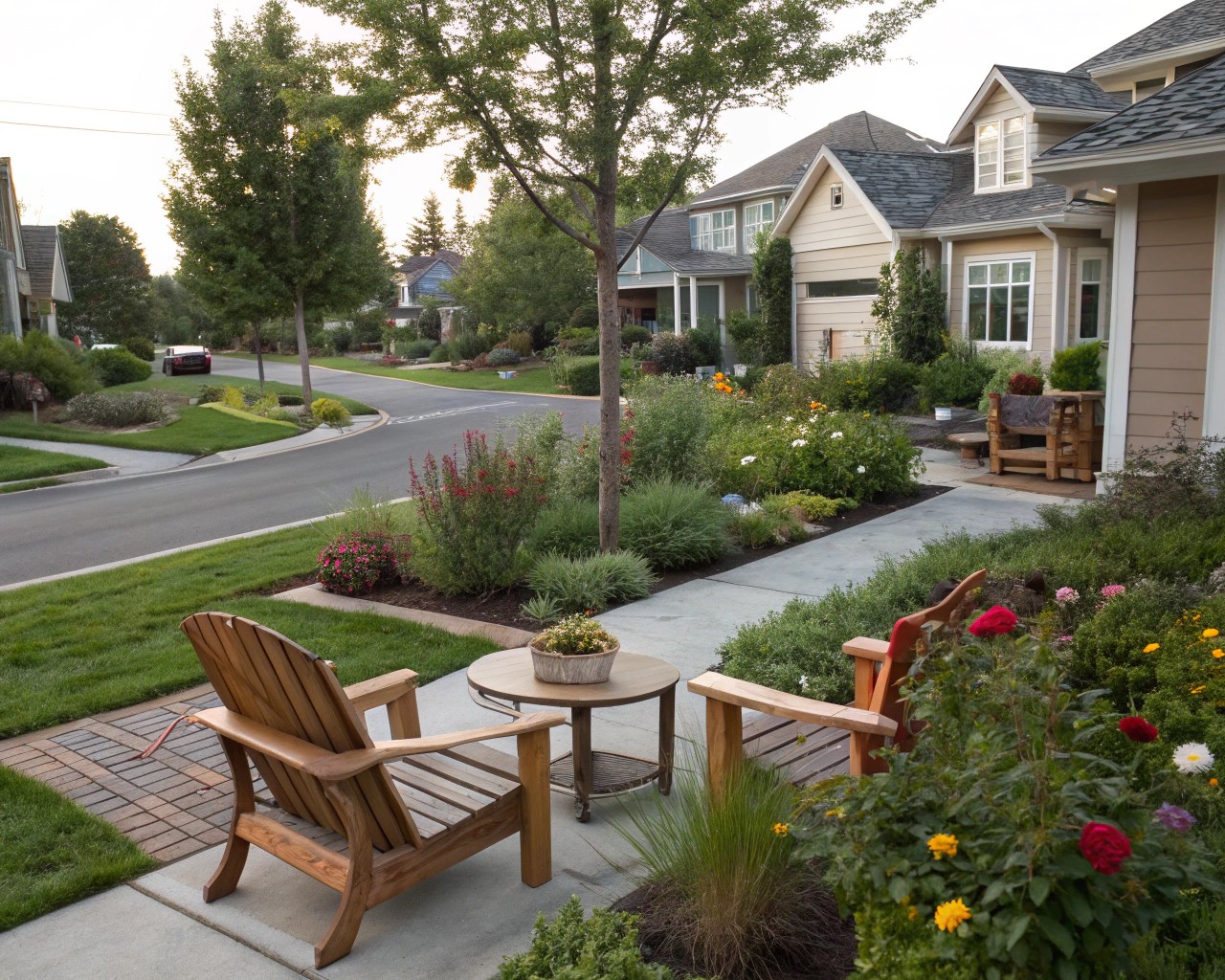
Research from Curtin University found that front yards serve as crucial spaces for social sustainability. Although technically private property, front yards visible from the street create opportunities for neighborhood engagement and contribute significantly to community building.
I recently worked with a family in Portland who wanted their front yard to be more sociable. We created what we called a “Simple & Social Front Yard” by incorporating:
- Garden beds with flowering perennials and shrubs enveloping a front patio
- Decomposed granite surfacing for a casual, rustic feel
- Strategic placement of focal plants to create implied boundaries while preserving open edges
- Sight lines connecting the sidewalk and seating area
Maintaining open edges is crucial; ensuring clear sight lines between the sidewalk and seating area encourages neighbors to approach and interact. Additionally, subtly widening the pathway material where it meets the public sidewalk can visually signal a welcoming transition onto the property.
Case Study: The Neighborhood Hub
One of my most successful front yard transformations was for the Martinelli family in Denver. Their corner lot offered significant potential but felt disconnected from the neighborhood. We created:
- A small seating area angled toward the intersection
- Low-growing, colorful perennials that provided visual interest without blocking views
- A permeable pathway connecting to the sidewalk
- Strategic lighting for evening enjoyment
Within three months, they reported regularly greeting neighbors, hosting impromptu gatherings, and feeling more connected to their community. Their front yard became a neighborhood hub—exactly what we had envisioned.
Plant Selection Strategies
Plants form the living framework of your front yard design. Appropriate selection and arrangement are crucial for both aesthetic appeal and long-term success.
Functional Plant Groupings

Rather than selecting plants purely for appearance, consider their functional roles:
- Structural plants: Trees and large shrubs that create the “bones” of your landscape
- Accent plants: Mid-sized flowering or colorful foliage plants that provide seasonal interest
- Ground plane plants: Low-growing groundcovers, perennials, and ornamental grasses
Arranging plants in groups containing odd numbers, particularly for smaller varieties where a minimum of three of the same type is recommended, helps create more naturalistic compositions and enhances visual impact.
Plant Selection Guidelines from Professional Practice
Based on dozens of successful projects, here are my key plant selection principles:
-
Use evergreens strategically: Incorporating evergreen shrubs is a straightforward way to ensure year-round landscape interest. Selections like low-growing boxwoods offer consistent visual appeal and require only occasional trimming to maintain their form and health.
-
Balance evergreen structure with seasonal interest: “There should be a balanced amount of evergreen shrubs combined with flowering perennials.”
-
Consider mature size: Always account for how large plants will grow to avoid future maintenance headaches.
-
Create plant communities: Group plants with similar water and light requirements.
List: Top Plants for Different Front Yard Conditions
For Sunny, Water-Conscious Yards:
- Lavender varieties (Lavandula spp.)
- Ornamental grasses (Miscanthus, Pennisetum)
- Russian sage (Perovskia atriplicifolia)
- Yarrow (Achillea millefolium)
- Agave varieties
For Part-Shade Conditions:
- Hydrangeas (Hydrangea macrophylla)
- Ferns (various species)
- Coral bells (Heuchera varieties)
- Japanese forest grass (Hakonechloa macra)
- Hellebores (Helleborus orientalis)
For Structure and Year-Round Interest:
- Boxwood (Buxus varieties)
- Dwarf conifers
- Yaupon holly (Ilex vomitoria)
- Viburnum varieties
- Japanese maple (Acer palmatum)
Hardscape Elements: Creating the Framework
Hardscape elements form the structural framework of your front yard, providing both function and visual organization.
Pathways and Access
Pathway design significantly impacts both the usability and aesthetic of your front yard. In my practice, I’ve found that thoughtfully designed paths can transform how people experience a space.
Design guidelines often permit pathways that meander naturally through garden beds or along the side of the yard. Common approved materials include flagstone, decomposed granite (sometimes combined with rock), or concrete, depending on specific community or project requirements.
Material Selection Guide
The materials you choose contribute significantly to the overall feel of your front yard. Each has distinct advantages:
Decomposed Granite (DG):
I often recommend DG for its natural appearance and permeability. For instance, in a recent Williams Landing project, sandy brown composite decking combined with DG created a visually appealing pathway to the front entrance. The colors were chosen to harmonize seamlessly with the home’s exterior, adding an elegant touch.
Concrete:
While sometimes viewed as utilitarian, contemporary concrete applications can be beautiful. Consider exposed aggregate, stamped patterns, or integral color for visual interest.
Natural Stone:
Though typically more expensive, natural stone creates an organic, timeless appeal. Even in yards with substantial lawn areas, gardens can effectively define the space. For example, a well-defined area below front steps featuring a stone patio and pavers, surrounded by beds full of colorful perennials and container plants on the stairs, can create a stunning entry experience.
Table 2: Comparison of Common Hardscaping Materials
| Material | Cost Range | Durability | Maintenance Level | Environmental Impact | Design Style |
|---|---|---|---|---|---|
| Concrete | $8-15/sq ft | High | Low | Moderate (impermeable) | Contemporary, minimalist |
| Pavers | $15-30/sq ft | High | Low-Medium | Variable (some permeable options) | Traditional, formal |
| Decomposed Granite | $3-7/sq ft | Medium | Medium-High | Low (permeable) | Casual, naturalistic |
| Natural Stone | $20-50/sq ft | Very High | Low | Low-Moderate | Organic, timeless |
| Gravel | $2-5/sq ft | Medium | Medium | Low (permeable) | Casual, rustic |
Sustainable Front Yard Practices
Sustainability isn’t just a buzzword—it’s essential for responsible landscape design. In my 15 years of practice, I’ve seen a dramatic shift toward eco-conscious front yards, and for good reason.
Water Conservation Strategies
Water conservation remains a primary concern for sustainable landscapes. Many municipalities now offer incentives for drought-tolerant landscaping. Here are practical approaches I regularly implement:
- Hydrozoning: Group plants with similar water needs together.
- Efficient irrigation: Use drip irrigation or high-efficiency nozzles targeted directly at plant roots.
- Rainwater harvesting: Collect rainwater from downspouts to use in the garden.
- Proper soil preparation: Improve soil with compost to increase water retention.
Recognizing the need for water efficiency, some communities, like Circle C in Central Texas, establish specific design guidelines. Their aim is to help homeowners transition to landscapes appropriate for the region, fostering attractive front yards that enhance curb appeal while prioritizing water conservation.
Reducing Resource-Intensive Lawns
While lawns have their place, reducing their footprint can significantly decrease water usage and maintenance. One common regulatory approach is to limit the amount of paving permitted in front yard setback areas (for example, to a maximum of 50% in residential zones), thereby ensuring sufficient space remains for planting while still allowing for functional hardscape.
For a recent project in Arizona, we replaced 80% of the front lawn with a diverse palette of native and adapted plants, reducing water consumption by approximately 70% while creating a more visually interesting landscape.
Case Studies: Front Yard Transformations
Real examples provide valuable insights into successful front yard designs.
Modern Family Front Yard: The Rogers Project
The Rogers family wanted to modernize their front yard while creating more usable space for their young children. The suburban lot had been dominated by lawn with a few foundation shrubs—a common but uninspiring arrangement.
We transformed the space by:
1. Creating a curved seating area near the street to encourage neighborhood interaction
2. Installing a playful stepping stone path that children loved to navigate
3. Reducing lawn by 60% and replacing with drought-tolerant perennials and ornamental grasses
4. Adding a specimen olive tree as a focal point
As Mrs. Rogers later told me, “What surprised us most is how much time we now spend in our front yard. Before the redesign, we only used it to walk to the mailbox. Now it’s where we greet neighbors, watch the kids play, and enjoy morning coffee.”
Townhouse Transformation: Limited Space, Maximum Impact
Limited space often yields creative solutions. In one townhouse project, concrete steps were added to create a gentler transition between upper and lower patio areas. The gravel patio surface was left un-edged, allowing the sedum groundcover collection to eventually fill in and form a natural boundary.
The planting scheme featured selections like Cornus ‘Elegantissima’, Pittosporum ‘Wheeler dwarf’, various Phormium cultivars, and Miscanthus ‘Morning light’. The clients particularly favored brightly colored Loll furniture, and the red chairs chosen provided a striking, vivid contrast against the surrounding greenery, a feature that has proven popular with subsequent clients as well.
Practical Implementation: From Planning to Reality
Translating design concepts into reality requires careful planning and execution. Here’s a practical roadmap based on my experience implementing dozens of front yard transformations:
1. Develop a Master Plan
Before breaking ground, create a comprehensive plan that addresses all elements:
- Hardscape locations and materials
- Planting areas with specific plant selections
- Lighting and irrigation components
- Phasing strategy if implementing over time
Whether designing from scratch or converting an existing yard, a thorough master plan is essential. Such a plan should detail the precise locations of all elements and ideally incorporate regional best practices, like the nine principles emphasized by the Florida-Friendly Landscaping program.
2. Prepare the Site Properly
Site preparation is often undervalued but critical for long-term success:
- Address drainage issues
- Improve soil where needed
- Remove unwanted elements thoroughly
- Create proper grades for pathways and patios
3. Install in the Correct Sequence
For efficiency and best results, follow this installation sequence:
1. Hardscape elements (patios, pathways, structures)
2. Irrigation systems
3. Large trees and structural plants
4. Smaller shrubs and perennials
5. Mulch and finishing touches
